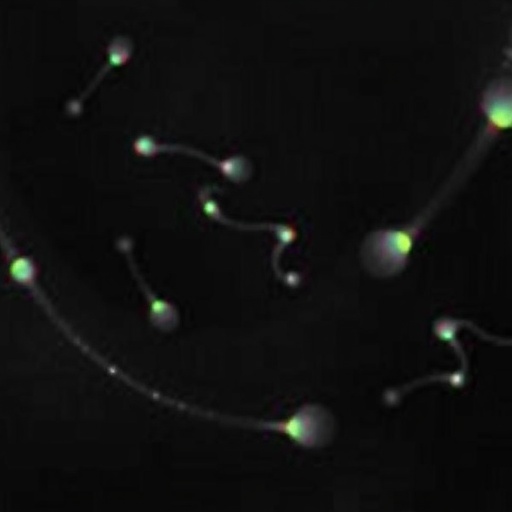In a groundbreaking advance in cell cycle biology, researchers have unveiled how the plant-specific phosphatase BSL1 orchestrates mitotic entry by directly targeting cyclin-dependent kinase B1 (CDKB1) phosphorylation sites. This discovery illuminates a fundamental regulatory mechanism underpinning cell division control in plants and could have far-reaching implications for understanding growth and development across the green lineage.
Cell division progression hinges critically on the timely activation and deactivation of cyclin-dependent kinases (CDKs), enzymes that coordinate cell cycle transitions through phosphorylation. In plants, CDKB1 plays a pivotal role, yet the regulatory phosphatases responsible for resetting CDKB1 activity had remained elusive. Through a cutting-edge global quantitative phosphoproteomics approach, the research team dissected phosphorylation dynamics in synchronized wild-type and mutant bsl1-1 cells at four meticulously chosen cell cycle stages: newborn cells, mid-G1, early S/M, and mid S/M.
Microscopy revealed bsl1-1 mutant cells undergo delayed division, corroborated by mass spectrometry data showing accumulation of S phase and mitotic hallmark proteins such as MCM3, RIR1, CDKA, CYCB1, and CDKB1 at later timepoints. Intriguingly, CDKB1 phosphorylation at threonine 14 (Thr14) and tyrosine 15 (Tyr15) was markedly elevated in the mutant at 8 and 10 hours, indicating BSL1’s role as a critical phosphatase targeting these sites.
Employing parallel reaction monitoring mass spectrometry, the researchers demonstrated a 30- to 60-fold increase in the doubly phosphorylated CDKB1 peptide harboring pThr14 and pTyr15 modifications within bsl1-1 cells relative to wild type. This contrasted sharply with a moderate twofold increase in the singly phosphorylated pTyr15 form, underscoring BSL1’s specificity in dephosphorylating both residues. Control peptides from proteins like PEPC2 and CDPKK exhibited no significant phosphorylation changes, pointing to the selectivity of BSL1-mediated dephosphorylation.
In established model organisms including yeast and animals, phosphorylation of the CDK catalytic subunit on Thr14 and Tyr15 is a canonical response to DNA replication stress, halting the cell cycle to maintain genome integrity. Exploiting this conceptual framework, the team induced replication stress in Chlamydomonas cells using hydroxyurea (HU), a ribonucleotide reductase inhibitor. HU treatment intensified CDKB1 phosphorylation without altering total protein abundance, mirroring stress-activated checkpoint phenomena known in other eukaryotes.
To parse the biochemical activity of BSL1, the investigators immunoprecipitated CDKB1 fused with a fluorescent mCherry tag from HU-treated cells and incubated it with recombinant BSL1 phosphatase domains. The pronounced reduction in phosphorylated CDKB1 species after treatment — comparable to the effect of lambda phosphatase and greater than that observed with Toxoplasma gondii PPKL — established BSL1 as a direct and efficient CDKB1 phosphatase. Negative controls, including buffer alone or unrelated proteins, failed to elicit such dephosphorylation, affirming assay specificity.
Further biophysical analysis via bio-layer interferometry uncovered a direct physical interaction between recombinant GST-tagged CDKB1 and purified BSL1, with a dissociation constant (K_d) of approximately 900 nM. This nanomolar affinity interaction strengthens the model wherein BSL1 engages its CDKB1 substrate in vivo, facilitating precise modulation of CDKB1 phosphorylation state and functional activity.
Confocal microscopy provided compelling spatial insight, demonstrating that BSL1 and CDKB1 colocalize near spindle poles during metaphase. Such subcellular localization is consistent with the previously reported spindle pole enrichment of CYCB1—a key cyclin partner of CDKB1—suggesting a coordinated regulatory complex modulating mitosis at the microtubule organizing centers.
The team also engineered a CDKB1 mutant variant harboring non-phosphorylatable alanine and phenylalanine substitutions at Thr14 and Tyr15, respectively. This CDKB1(AF) construct abolished phosphorylation signals upon HU exposure, confirming these residues as critical regulatory phosphorylation sites controllable by BSL1. Parallel proximity labeling experiments using the BSL1–BioIDG3 fusion protein revealed an enrichment of CYCB1 labeling, implicating BSL1 within a broader mitotic complex that integrates cyclin and kinase signaling pathways.
Taken together, these comprehensive in vivo and in vitro data compellingly position BSL1 as an indispensable phosphatase directing the removal of inhibitory phosphate marks on CDKB1 to promote mitotic entry in plant cells. The intricate temporal control of CDKB1 phosphorylation by BSL1 ensures proper cell cycle progression and faithful chromosome segregation.
This discovery opens new avenues for manipulating plant growth and cell division, with implications for agriculture, bioengineering, and synthetic biology. By decoding how cyclin-dependent kinase activity is finely tuned through specific phosphatase action, scientists gain a powerful tool for modulating developmental timing, stress responses, and tissue regeneration in crops.
Moreover, the findings resonate beyond plants, as phosphorylation-dependent regulation of CDKs is a conserved feature across eukaryotes. Comparative analyses can now explore whether functionally analogous phosphatases operate in other kingdoms, potentially enriching our understanding of mitotic regulation and cell cycle checkpoints universally.
Future research can build on this work to elucidate the regulatory networks upstream of BSL1 that control its activity and subcellular localization, as well as downstream consequences on mitotic machinery and genome stability. Understanding how environmental signals and cellular stress integrate with phosphatase-mediated CDK control will deepen insight into plant adaptability and resilience.
The elegant combination of phosphoproteomics, molecular genetics, live-cell imaging, biochemical assays, and biophysical techniques exemplifies a multidisciplinary approach at the forefront of cell biology research. This integrative methodology serves as a blueprint for dissecting complex regulatory mechanisms in diverse biological systems.
In sum, the revelation that BSL1 dephosphorylates CDKB1 at Thr14 and Tyr15 represents a critical advance in unraveling plant-specific controls of cell division. This study not only fills a pivotal knowledge gap but also sets the stage for transformative applications in plant science and beyond.
Subject of Research:
The study investigates the regulation of mitotic entry in plants by elucidating the role of the plant-specific phosphatase BSL1 in dephosphorylating cyclin-dependent kinase B1 (CDKB1) at key inhibitory sites.
Article Title:
Mitotic entry is controlled by the plant-specific phosphatase BSL1 and cyclin-dependent kinase B.
Article References:
Tulin, F., Aizezi, Y., Reyes, A.V. et al. Mitotic entry is controlled by the plant-specific phosphatase BSL1 and cyclin-dependent kinase B. Nat. Plants (2025). https://doi.org/10.1038/s41477-025-02145-z
DOI:
https://doi.org/10.1038/s41477-025-02145-z




